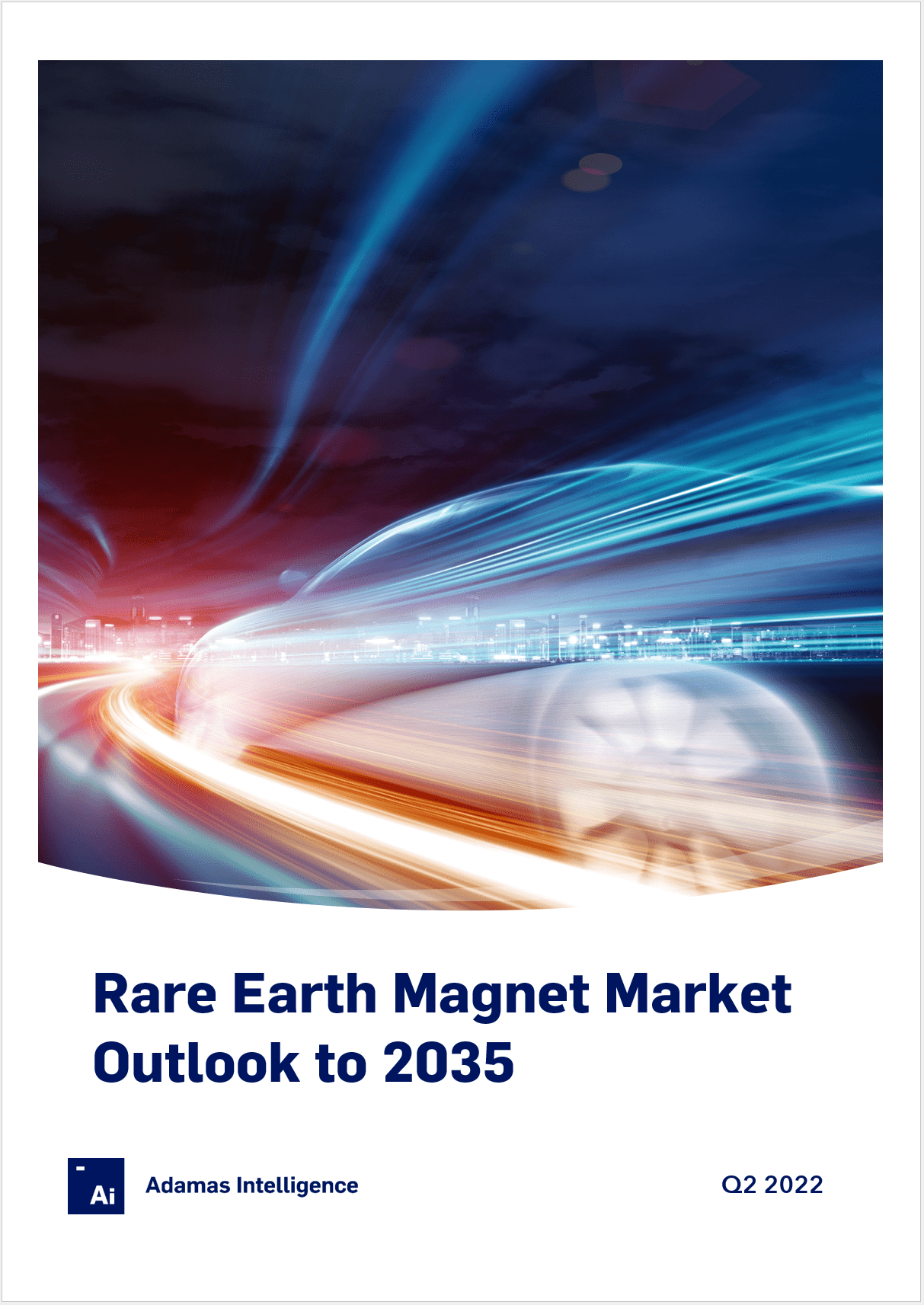Magnetic Momentum Rising in North America and Europe
Wave of incoming NdPr oxide supply helping de-risk the business case for downstream investments
The past 12 months have seen more momentum to re-establish and/or expand NdFeB production capacity in North America and Europe than the past 12 years combined.
With a wave of incoming NdPr oxide supply from MP Materials, Lynas, Iluka, Neo Performance, and others, much of the chicken-and-egg dilemma of yesteryear has been resolved, helping de-risk the business case for downstream investments in North American and European metals, alloy and magnet production capacity.
Key developments in recent months include:
- In late 2021, MP Materials and VAC announced plans to build NdFeB metal, alloy and magnet making plants in the U.S., from which they will supply General Motors (and others).
- Similarly, in late 2021, Neo Performance Materials and the Estonian government jointly announced their intent to develop NdFeB production capacity in the nation, where the former currently produces rare earth oxides.
- In mid 2022, USA Rare Earth, announced plans to build an NdFeB magnet factory in Oklahoma using rare earths mined at the company’s Round Top project in Texas.
- Similarly, in mid 2022, GKN Powder Metallurgy, a leading manufacturer of metal powders and automotive parts, announced plans to establish NdFeB magnet production capacity for the European and North American automotive market by 2024.
- More recently, Solvay announced plans to expand its rare earths operations at La Rochelle, France, to produce NdFeB magnets for customers in the fast-growing electric vehicle, wind power and electronics markets.
- Moreover, with commissioning of its initial magnet production capacity started in 2021, Texas-based Noveon Magnetics (formerly Urban Mining Company) saw the formal launch of its proprietary “EcoFlux” NdFeB product in 2022.
The above-listed developments, and others yet to come, are a testament to the upstream market’s rising diversity and supply security coupled with the downstream market’s rapidly increasing demand for sustainable supplies of NdFeB magnets – particularly for electric vehicles.
Heavy rare earths: Heavily under-addressed blindspot in the automotive supply chain
As new alternative mine-to-magnet supply chains continue to emerge, connecting North America, Europe, Africa and Australia, Adamas believes there will be insufficient heavy rare earth oxide supply outside of China and Myanmar to meet the needs of emerging magnet makers, even with future heavy rare earth production from MP Materials, Lynas, Iluka, and others.
Moreover, with China’s known heavy rare earth resources dwindling and feedstock supplies from Myanmar into China drying up in the first half of 2022, Adamas expects China will soon face a domestic heavy rare earth supply crunch that could severely curtail its dysprosium and terbium exports.
Without sufficient supply of dysprosium and terbium, future magnet makers in North America and Europe will not be able to produce enough high-grade NdFeB magnets for the automotive industry, wind power sector and other critical end-use sectors, jeopardizing the competitiveness of downstream industries in these regions and potentially derailing the roadmaps of automakers, technology developers and governments alike.
Dysprosium and terbium: Crack in the emerging armor
By the end of the decade, Adamas expects ex-China NdPr oxide supply will be sufficient for production of more than 60ktpa of NdFeB magnets. However, unless numerous HREO producers come online outside of China and Myanmar over the same period, just 10% to 20% of this prospective NdFeB magnet production at most could be high grade (i.e., high-temperature-performance) magnets for automotive or wind applications.
Overall, for North America and Europe to fully electrify vehicle production and sales by 2035 with just 50% of vehicles using PMSM traction motors (versus 95% using PMSM in 2021) will conservatively necessitate all the world’s current global dysprosium and terbium oxide supply annually. Fully electrifying vehicle production and sales in the Asia Pacific region will necessitate the same. With current global heavy rare earth oxide production increasing just marginally each year and the outlook for Myanmar (miner of 40% of the world’s dysprosium and terbium) uncertain, heavy rare earth elements remain a massively under-addressed blind spot in the automotive supply chain.
There are more than a dozen emerging rare earth producers globally with potential to produce modest amounts of dysprosium and terbium oxide annually by the middle-to-end of the decade, however, their collective supply would still be painfully insufficient for the North American and European automotive industries, let alone the wind power, industrial, consumer and defense end-use sectors in these regions.
Bottom line: Stakeholders need to collectively and imminently address the looming heavy rare earth supply crunch or risk seeing current momentum and magnet supply chain investments fatally undermined by a lack of dysprosium and terbium.
To counter the issue, JL MAG Rare-Earth, Neo Performance Materials and others have developed novel, proprietary methods to produce high grade NdFeB magnets for EVs with substantially reduced concentrations of heavy rare earths versus what can be achieved with standard grain boundary diffusion.
However, even with these innovations the global (and especially ex-China) market for heavy rare earths is expected to remain very tight into the foreseeable future, boding well for those with access to the aforementioned technologies and those with access to sustainable heavy rare earth supplies.
More Information: Rare Earth Magnet Market Outlook to 2035
In this report, we provide a detailed overview of the global NdFeB alloy, powder, magnet and magnet rare earth oxide markets, including a breakdown of historical production, consumption and prices from 2015 through 2021. Next, we unravel the anticipated near-term impacts of the pandemic recovery on world markets and forecast global supply, demand and prices from 2022 through 2035.

Back to overview


